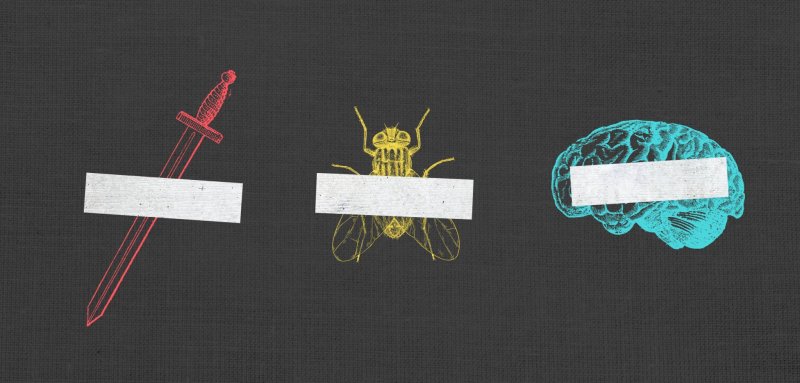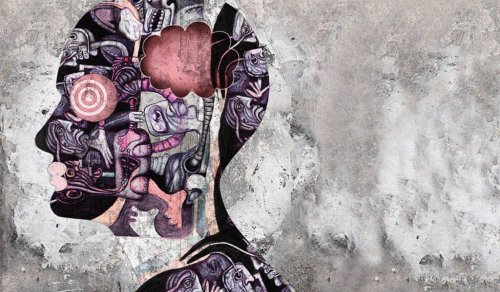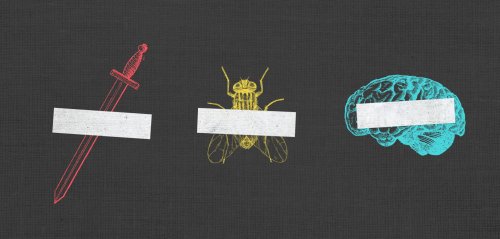Throughout the different eras of Islamic history, it was common practice to bestow an array of derogatory names for a selection of caliphs, sultans, governors and politicians – driven by political motives to spite the rulers and challenge their authority and prestige: this became a grassroots method of vengeance from ruthless rulers.
The Umayyads… Things Were Personal
The founder of the Umayyad Caliphate Muawiyah (602-680 bore the grunt of the people who called him among other thigns: “the son of a liver-eater” – as Fouad al-Sayed relates in his book “Dictionary of the Nicknames of Politicians in Arabic and Islamic History” – a reference to his mother Hind bint Utbah who it is said had taken a bite out of the liver of the Prophet’s uncle Ḥamzah ibn ‘Abdul-Muṭṭalib after hiring a slave to assassinate him during the Battle of Uhud.
Many names were reserved for the fourth Umayyad Caliph Marwan (623-685), those who wanted to get the best of him calling him the son of al-Zarqa, al-Zarqa being his grandmother, whom it is alleged in some of the literature to be a woman ‘of the banner’ – the banner being a sign directing men to the brothels at the time. Marwan was also labelled “The son of the banished”, al-Sayed reports, with the ‘banished’ in question being his father al-Hakam ibn Abi al-As – one of the most staunchly opposed figures to the Prophet Muhammad, who was later exiled to Taif after the Prophet’s victorious return to Mecca.
Along the same path, two nicknames were reserved for the fifth Umayyad Caliph, Abd al-Malik ibn Marwan (646-705): the first al-Sayed relates is “The Sweat of a Stone”: i.e. a cheap, miserly ruler; the second nickname as cited in Abdel Malek al-Hadrami’s “The Perianth and Oyster Pearl”) was “Father [possessor] of the Flies” in reference to the stench of his breath and his bleeding gums which attracted the flies.
The tenth Umayyad Caliph, Hisham ibn Abd al-Malik (691-743) was not more fortunate, being nicknamed “The Thief” for his suspension of the customary grants offered to the people of Medina (the Prophet’s city) for two years – as the Mamluk historian al-Safadi notes in his major biographical dictionary: “Complete Collection of Obituaries of Important Persons.”
The eleventh Umayyad Caliph, al-Walid II, was meanwhile known as “The Debauched” – as the polymath al-Masudi records in his celebrated work “The Meadows of Gold” : “al-Walid ibn Yazid was a man of drinking, leisure and music … he displayed [his] drink, cabaret and music… a shameless, uninhibited, debauched man.”
Nicknames were also extended to administrators in the Umayyad state, as was the example of Ziyad ibn Abih (622-673), who was appointed by Ali ibn Abi Talib (the Prophet’s cousin) as governor of Persia. When Ali was killed, Muawiyah feared his influence and so enlisted his family’s services in the year 665, deploying him as governor of Iraq in an attempt to bring order to the region. Ibn Abih would be known as “ibn Samiyah” – after his mother who was accused of prostitution. In al-Masudi’s words: “Samiyah was a woman “of the banner” [i.e. procurer of prostitution, similar to a madam] in Taif where she paid a tax [commission or ‘cut’] to al-Harith bin Kildah; she used to go to the area frequented by prostitutes outside the urban centre in a place that used to be called: alley of the prostitutes.”
Umayyad administrators would receive the largest share of derogatory nicknames, as was the case of Ubayd Allah ibn Ziad, who was appointed governor of Iraq and Khurasan (modern-day north-east Iran and parts of Afghanistan) in 672/673 under the Umayyads, before having Basra added to his domain in 674/675, where he fought the Khawarij bitterly (the khawarij are an extreme offshoot sect of Muslims who would later assassinate the caliph Ali). Muawiyah’s son Yazid would reaffirm ibn Ziad’s position as governor in 680 on his succession after the death of his father.
In his book “The Pillar of the Reader: Explanation of al-Bukhari’s Sahih” Badr al-Din al-Ayni notes that ibn Ziad was known as “ibn Murjana” – a reference to his mother who is a Zoroastrian sabiya (war slave) from Asfahan.
Meanwhile in his celebrated work “History of the Prophets and Kings,” the ninth and tenth century Persian scholar and Qur’anic exegete al-Tabari writes that the governor of Khurasan, Sai’d bin al-Harith (appointed in 721), was nicknamed “housewife.” al-Tabari attributes this to the governor being “a gentle, easy-going man with a melodic voice; when he arrived as governor of Khurasan, with a knife suspended in his middle, a king drowned in rainwater [or thirsty, or jealous] entered, while Said was in dyed [dried] clothes, surrounded by dyed accessories resembling jewellery. When he departed they asked him: ‘How did you find the prince?’, to which he responded: ‘A housewife, cursed by his knife.’
This account is contradicted by al-Sayed, who instead ascribes the origin of ibn al-Harith’s nickname to his effeminate nature and luxurious lifestyle, which earned him the title “free noblewoman” by the people of Samarkand (in modern-day Uzbekistan)
Meanwhile, Khaled al-Qasri – the Umayyad governor of the ‘two Iraqs’ (namely Kufa and Basra) between 724-738 during the reign of Caliph Hisham ibn Abd al-Malik – was given the title before his dismissal of “the diminished [punctured]” , because he used to act womanly when he spoke and kept the company of singers and the famous poet Omar Ibn Abi Rabi’ah, sending messages to women, al-Sayed relates.
Since time immemorial, the people of our region have had to call their rulers nicknames ranging from “Blood Shedder” to “Son of a Prostitute” in revenge for their despotic and mad practices.
1500 years later, the nicknames used to describe the Kings of our lands are still appropriate today. Bad Breath, The Insane, The Butcher and Fat Aleppan. It could all be 2019.
The Abbasids…Blood Coloured Nicknames
Abbasid Caliphs and rulers were generally associated with titles related to the colour of blood, starting with the founder of the Abbasid state and its first Caliph in Iraq Abu al-Abbas (721-754): known more commonly by his moniker “As-Saffah” – “the blood-shedder” – because of the amount of Umayyad blood he shed. According to al-Sayed, as-Saffah pursued Umayyad survivors until he was able to capture, kill, crucify and burn them to death, leaving only children and the Umayyads who succeeded in escaping to Andalusia.
Abu al-Abbas As-Saffah was also known as “Abu al-Dawaniq al-Abbasi” or “father of the Dawaniq”: with dawaniq a Persian currency unit equivalent to a “sixth of a Dirham [Arab currency]” This was a reference to As-Saffah’s perceived greed, wherein he used to pay workers, tradesman, wage-earners and craftsmen in Dawaniq.
Meanwhile, the people of Mosul labelled their governor Yahya al-Abbasi as “Death” because of the amount of blood he shed. In his book“Lineage of the Noble”, the eminent ninth century historian al-Baladhuri states that al-Abbasi “was rash with a lack of deliberation in his actions… the people of Mosul were divided into three groups: Khawarij, thieves and merchants; he called [the people of Mosul] to prayer and the people assembled, and ordered them all killed, including merchants.”
al-Sayed also reports that the governor of Yemen during the period 815-825, Ibrahim ibn Musa al-Kazim – who initially led a Shia rebellion against the Abbasid authorities which succeeded in occupying Yemen and Mecca (leading to the recognition of his authority by the Abbasid caliph al-Ma’mun and his integration into the Abbasid state) – was nicknamed “The Butcher”.
Other nicknames were also affixed to rulers based on their personal characteristics. Thus the example of the fourth Abbasid caliph Musa al-Hadi (764-786), who was known as “Atbaq” – literally “shut” or “closed”, a reference to a habit he developed in his childhood of keeping his mouth open. Abd al-Malek ibn Husayn relates in his “The Thread of the Higher” that al-Hadi’s father designated a special servant who stayed with him day and night, telling al-Hadi each hour: “Musa, close your mouth [atbaq]”– thus earning him the title before becoming caliph.
As for Abdullah ibn Mus’ab ibn Thabit al-Zubayri (729-800) – the great-great-grandson of the Prophet’s companion al-Zubayr ibn al-'Awwam – who was made governor of the region of al-Yamaunder both Abbasid caliphs al-Mahdi and al-Hadi, the historian Ahmed bin Yousif bin Abd al-Da'im Ma'arouf (also known by his appellation “fat Aleppan”) relates in his book ‘The Pillar of the Memorisers in Explaining the Most Noble of Terms’ that al-Zubayri’s enemies called him “The Visitor of Dogs” for his declaration: “Why is it that nobody visits me when I am sick, while if one of your dogs becomes sick I visit you?”
The Mamluks… the Reckless and Ignorant
The trend was different in the Mamluk era, with the derogatory nicknames tied to the frivolity, folly and ignorance of various rulers. This was the case with the title “The Insane” given to Ala’a al-Din al-Mansuri, the governor of Bab al-Qala’a under the reign of the Mamluk Sultan al-Mansur Qalawun (1222-1290).
In her study “Popular Writings as Sources of Revolution and Protest in Mamluk Egypt”, Professor Samah al-Sellawi notes that Qalawun exhibited the same tendencies of the infamous Ayuubid administrator Baha’a al-Din al-Qaraqush, such as his “domination over women, preventing them from going out to the market”. Adding that Qalawun “used to go out to the City of the Dead during the holidays where he victimised them, making them refrain from going out except in emergencies.”
The same title was ascribed to Sawdun al-Muhammadi who was one of the close inner coterie (that kept the sultan company outside of work, including in his solitude and free time) of the Mamluk sultan Barquq (1336-1399). The title ‘Qaraqush’ was because he was a “brave young man with excessive ignorance”, as thirteenth century historian and scholar al-Sakhawi mentions in his “The Shining Light of the People of the Ninth Century” (relayed by al-Sellawi).
The title of “The Insane” was also ascribed by commoners to some of the weak Mamluk sultans, such as Sayf al-Din Yalbay, who assumed power in 1467. In his "The Beautiful Flowers About the Events of the Times", fifteenth century Egyptian historian Muhammad ibn Iyas records that Yalbay “used to spend his time in darkness with his Mamluks [slaves], his clothes were dark, and his appearance pathetic and his planning was bad – so he combined ugliness in action, appearance, bad mannerisms and an abhorrent tongue; he was also excessively cheap and conducted all of his affairs badly.”
Yalbay was beguiled by the emir Kha'ir Beg, and did not take a decision in the affairs of state except after taking his opinion. Thus ibn Iyas reports that if Yalbay was asked something, he would respond: “What am I [in importance]… tell him” in deference to Khai'r Beg – thus becoming endowed by nickname of “Tell Him” by the common people.
“Yalbay the Insane” was dismissed soon after, and was replaced by Timurbugha. Timurbugha could not satisfy Kha'ir Beg however, so he excluded and isolated him – leaving Timurbugha to assume the Sultanate at night and anoint himself with the traditional Mamluk title, ‘al-Zahir’ (the victorious). However, he would be soon removed from his post after the atabak (field marshal of the Mamluk army) Qaitbay – later to become one of the most renowned Mamluk sultans – attacked the Cairo Citadel and arrested Timurbugha. The events inspired the common people to term Timurbugha the “One-Night Sultan” for his short period in power, and mocked him by saying “the words of night are erased by the morning” – as ibn Iyas relates.
Meanwhile, the prince Saif al-Din Malktamar al-Nasari (who died in 1314) was given the title “Black Blood” because of his oppressive governance: he used to extract the tributary land-tax from his dominion in Damascus five times a year, initiating a practice that would continue by his successors and thus causing severe harm to the people – as the thirteenth century Egyptian historian ibn Taghribirdi reports in his “The Brilliant Stars Regarding the Kings of Egypt and Cairo.”
Meanwhile, the title of the “Ceiling Mouse” was accorded to al-Muhtasib Nasir al-Din, the chief accountant (exchequer) of Egypt during the reign of Nasir al-Din Muhammad, in charge of tax-collection in exchange for paying a fee to the government. Al-Muhtasib would however embezzle money out of the taxes, leading to a popular protest against him in 1336 – as al-Yusufi relates in his “A Spectator’s Stroll through the life of al-Malik al-Nasir.” The “ceiling mouse” here connotes a person that permits for themselves the seizure (in violation) of everything, thus resembling a mouse that eats grains (or seeds) in the countryside.
Finally, in the year 1418, the people accorded the title of “The Devil” to the prince 'Ilm al-Din Aqbagha bin Abdullah – who combined the governorship of Cairo with also being its exchequer and Shad – or Supervisor of the government’s ministries (Divans). Of bin Abdullah, it was said (according to ibn Taghribirdi) that “he had acumen [perception] and knowledge [combined] with injustice and oppression [arbitrariness], but he kept chaste [away] from forbidden acts.”
The Ottomans… Bloody Titles
Many politicians would also be subject to derogatory titles during the Ottoman era, the most important of which was perhaps that given to the thirty-fourth Ottoman Sultan Abdul Hamid II (1842-1918), who was bestowed with the title of “the Red Sultan” because of the amount of blood he shed, according to al-Sayed. This is contradicted however by Muhammad Harb in his book “Sultan Abdul Hamid the Second: the last of the great Ottoman sultans”: namely that it was the West that dubbed the Sultan with that title, because of his firm policies against Russian-backed Armenian mutinies.
Another who was termed “the Butcher” before the reign of Abdulhamid II was Ahmed Jazzar [butcher] Pasha – the Acre-based (modern-day Palestine) Ottoman governor of Sidon and later Damascus, as well as the Emir in charge of the Hajj pilgrimage. Here, al-Sayed narrates that Jazzar Pasha earned his title following his massacre of Egyptian Bedouin, whereby he prepared an ambush in which 70,000 are said to have been killed – including sheikhs (notables) and military commanders.
So too would Ahmed Jamal Pasha, who was appointed by the Ottoman state in December 1914 as commander of the Fourth Army stationed in Syria (and general ruler of Syria), earn the title “Blood-Shedder.”
In his book “History of the Ottoman Administration in Transjordan between 1865-1918” Ahmed Shaqairat reports that Jamal Pasha enforced a policy of brutality and exemplary punishment of the Arabs and their leaders in the Levant (Greater Syria), accusing them of treason by virtue of their call for decentralised governance – while he treated the Armenian minority extremely harshly and deported hundreds of families to Anatolia.
This did not satisfy the “Blood-Shedder”, who proceeded to sentence many leaders to death: this would include a notorious execution of 11 individuals in Beirut in August 1915, as well as the execution of other intellectuals in Syrian cities – with the last execution taking place in May 1916.
Raseef22 is a not for profit entity. Our focus is on quality journalism. Every contribution to the NasRaseef membership goes directly towards journalism production. We stand independent, not accepting corporate sponsorships, sponsored content or political funding.
Support our mission to keep Raseef22 available to all readers by clicking here!
Interested in writing with us? Check our pitch process here!









